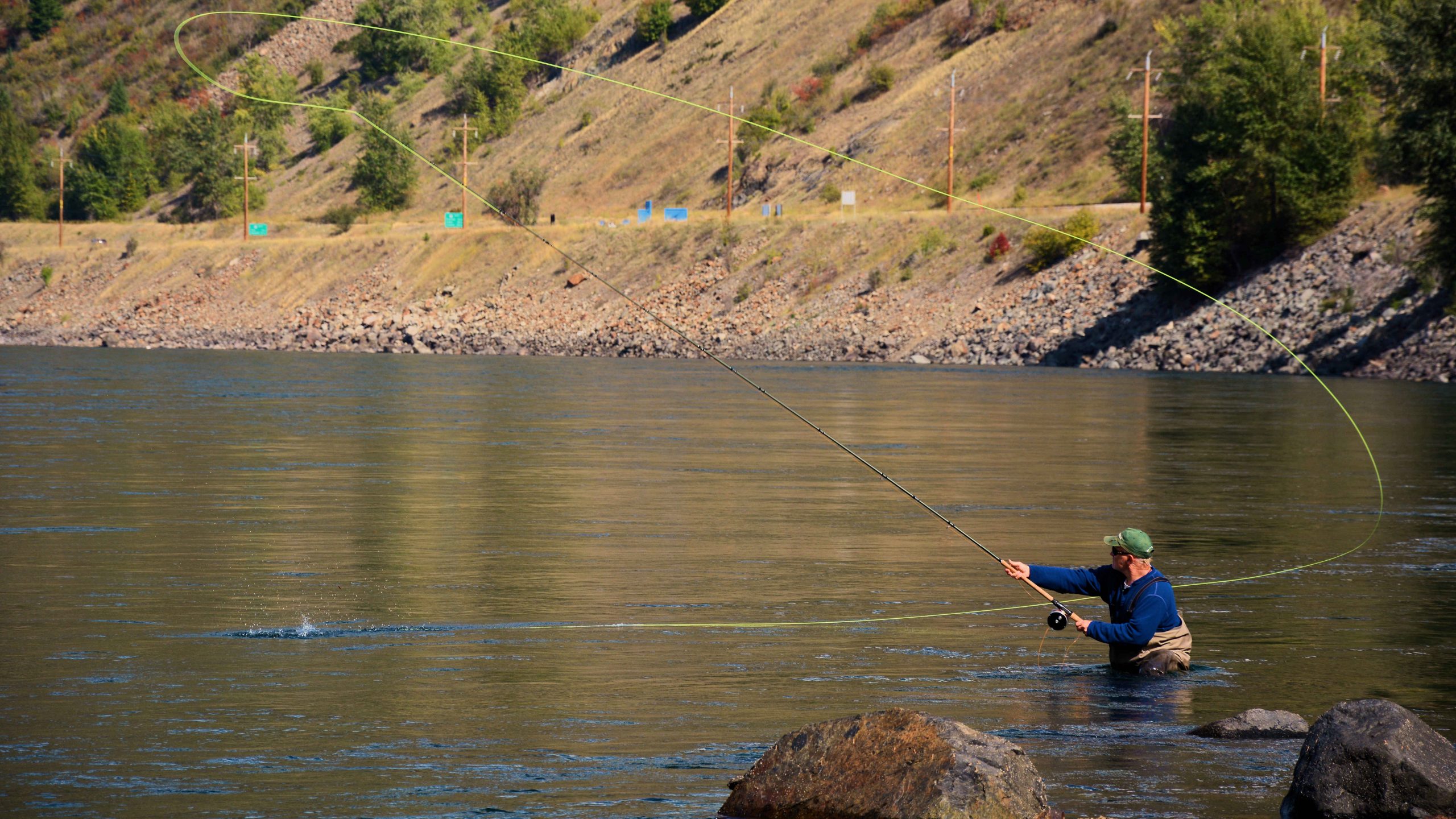Trout Need Hierarchy: To thrive, rainbow trout have a hierarchy of basic needs. The most basic is that the water must be clean, at the right temperature, and well oxygenated. Shelter and safety are very important to a trout so they can rest and feel safe. They feel safe when they can hide in deep water, rough water, or with some form of physical overhead covering such as a sunken log. Trout also need shelter from the current flow so they do not need to constantly expend energy to maintain their position in the river. Trout also need a sufficient source of food and the ability to reproduce in good spawning grounds.
Fish Lies: It should go without saying that the best fishing is where the fish are. Fly fishers call these places fish lies. Given the high priority trout place on safety and shelter, a good lie includes the aforementioned deep, rough, or sheltered water, and these lies usually provide a productive angling experience. When the trout get hungry they may venture out into unsafe calm water such as flats when insects are hatching (a hatch) and there is plenty of protein rich food floating about. When the conditions are right this is another good fish lie that can be productive.
Prime Fish Lies: The best fishing is where the fish feel safe, are sheltered, and have a good food source. This is a prime lie. A current seam is the junction between fast and slow water and it can provide this perfect environment. A boulder, ledge, corner in the river or other obstruction can offer protection from predators and slow the water to create a safe resting place out of the main turbulent current. The junction that’s created between fast and slow water is known as the current seam and can act as a food carousel for trout. The trout stay safe and sheltered in the slow water and dart out when a tasty morsel of food drifts by.
A riffle can also be a prime lie as the surface turbulence will offer cover and boulders shelter the trout from current. Likewise, in front of, to the side of, or at the back of a boulder can create a good fish lie. Learning where the fish are is the first step in catching fish, but to catch a hungry fish you also have to know what they are feeding on. Fish don’t always bite because they are hungry, they often bite because your offering annoys them, or they could just be curious. For more information on what insects Columbia River rainbow trout feed on visit our Entomology Primer.

